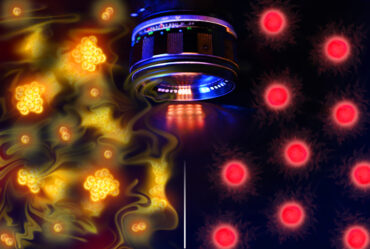Atomic Physics
Atomic physics seeks to understand and control the quantum behavior of matter at the smallest scale. What are the fundamental properties of single atoms, ions, molecules, and photons? Once we combine them together, what are the laws governing emergent many-body phenomena such as superfluidity and magnetism? Can we create and study new states of matter that have never existed in nature before? And how can we exert control over quantum properties to engineer useful systems such as precise clocks, new sensors, fundamentally improved measurements, and new paradigms of quantum computation?
At MIT, researchers trap and manipulate individual ions, photons, spins, and clouds of atoms and molecules. They cool gases down to temperatures a million times colder than deep space, control and image matter at the level of single atoms, hunt for dark matter, tame single photons of light, and control atom-light interactions to generate entanglement and correlations among quantum particles. This research is made possible by an ever-expanding atomic physics toolbox, including ultra-stable lasers, atom and ion traps, nanofabrication of photonic structures, high-resolution microscopes, and optical tweezers.
The group is anchored by the NSF Center for Ultracold Atoms (CUA), a joint effort between atomic physicists at MIT and Harvard, and is also vitally involved in educational activities.












